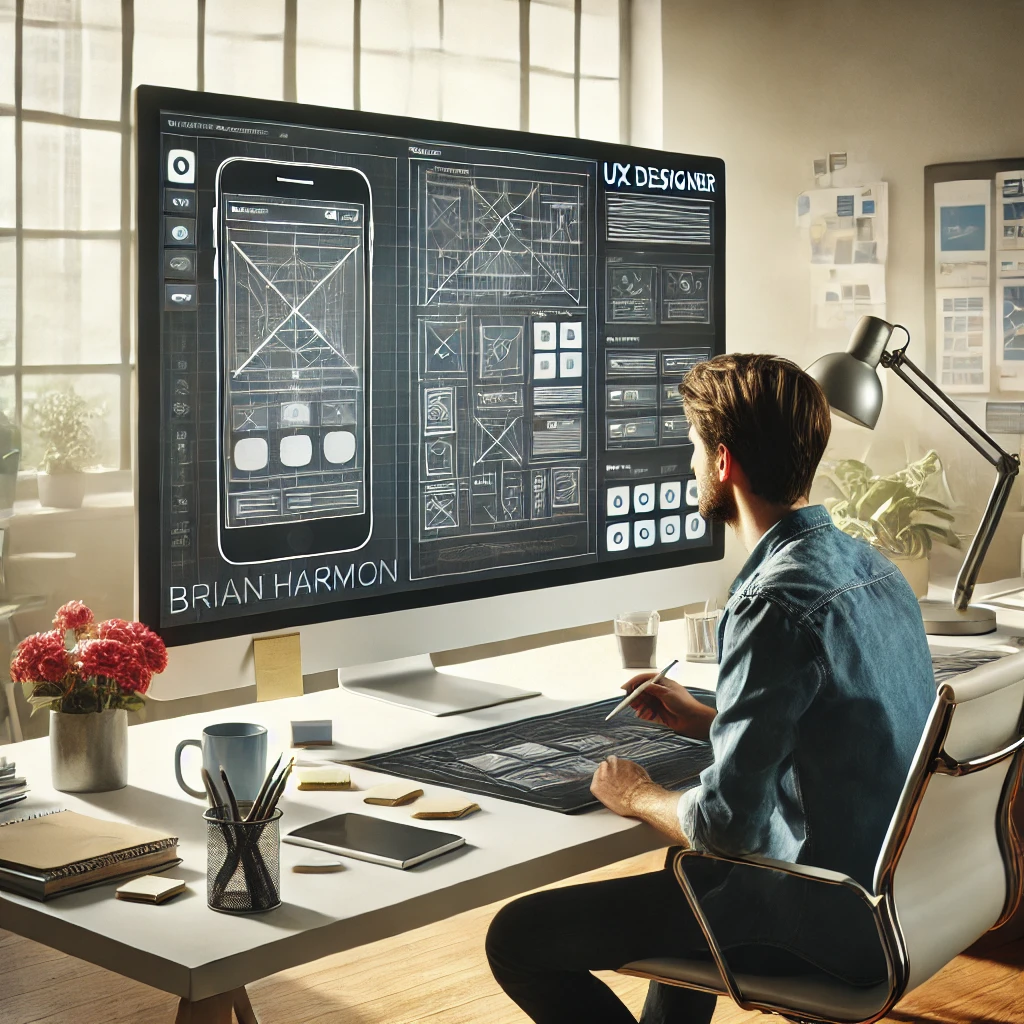In today’s digital landscape, the user experience (UX) is crucial to the success of any online platform, application, or service. A well-designed user interface not only enhances usability but also significantly impacts how users perceive a brand. One of the professionals at the forefront of UX design is Brian Harmon, a highly regarded UX designer known for his innovative approaches and meticulous attention to detail. This article delves into Brian Harmon’s career, his design philosophy, notable projects, and his impact on the field of UX design.
Who is Brian Harmon?

Brian Harmon is a seasoned UX designer with over a decade of experience in the industry. He has built a reputation for creating user-centric designs that are both functional and aesthetically pleasing. Brian’s expertise lies in understanding user behavior and translating that knowledge into intuitive interfaces that enhance the overall user experience.
Brian’s journey into UX design began with a strong foundation in graphic design and human-computer interaction. His early work involved designing websites and mobile apps, where he quickly realized the importance of putting the user at the center of the design process. Over the years, Brian has honed his skills in various aspects of UX design, including user research, wireframing, prototyping, and usability testing.
Brian Harmon’s Design Philosophy

Brian Harmon’s design philosophy is rooted in empathy and usability. He believes that the best designs are those that are invisible—meaning they are so intuitive and easy to use that the user hardly notices the design at all. For Brian, the key to great UX design is understanding the needs, motivations, and pain points of the users. This understanding allows him to create designs that not only meet the users’ needs but also delight them.
Brian is also a strong advocate for accessibility in design. He emphasizes the importance of creating digital products that are usable by as many people as possible, regardless of their abilities or disabilities. This inclusive approach is evident in all his projects, where he ensures that accessibility is integrated from the very beginning of the design process.
Notable Projects and Achievements
Throughout his career, Brian Harmon has worked on a wide range of projects, from small startups to large enterprises. His portfolio includes everything from e-commerce platforms to educational tools, each showcasing his ability to create seamless and engaging user experiences.
– E-Commerce Platform Redesign: One of Brian’s most notable projects involved the complete redesign of a major e-commerce platform. The goal was to improve the overall user experience, reduce cart abandonment rates, and increase conversion rates. By conducting extensive user research and testing, Brian identified key pain points and areas for improvement. The redesigned platform featured a more intuitive navigation system, streamlined checkout process, and personalized user recommendations, which resulted in a significant increase in sales and customer satisfaction.
– Educational Tool for Students: Brian also led the UX design for an innovative educational tool aimed at helping students learn complex subjects more effectively. The project required a deep understanding of the learning process and how students interact with digital content. Brian’s design incorporated interactive elements, clear visual cues, and a user-friendly interface that made the learning experience more engaging and accessible. The tool was widely praised for its effectiveness and ease of use.
– Mobile App for Healthcare: In the healthcare sector, Brian contributed to the design of a mobile app that helps patients manage their health conditions. The app needed to be both secure and easy to use, catering to a wide demographic, including older adults. Brian’s approach focused on simplifying the user interface, ensuring clear communication of critical information, and incorporating features like voice commands for accessibility. The app was well-received and has become a valuable resource for patients and healthcare providers alike.
Brian Harmon’s Impact on the UX Design Community

Beyond his client work, Brian Harmon is also an active member of the UX design community. He regularly speaks at conferences, sharing his insights on user-centered design, accessibility, and the future of UX. His talks often focus on the importance of empathy in design and how understanding user behavior can lead to better products.
Brian is also a mentor to many up-and-coming UX designers, offering guidance and support as they navigate their careers. He believes in the power of collaboration and often works closely with other designers, developers, and stakeholders to create the best possible user experiences.
In addition to his speaking engagements and mentorship, Brian has contributed to several publications on UX design, where he shares his knowledge and experiences. His articles and blog posts are widely read by designers looking to improve their skills and stay up-to-date with industry trends.
The Future of UX Design According to Brian Harmon
As the digital landscape continues to evolve, so too does the field of UX design. Brian Harmon is optimistic about the future, believing that advancements in technology will open up new possibilities for creating even more engaging and accessible user experiences.
One area that Brian is particularly excited about is the potential of artificial intelligence (AI) in UX design. He envisions AI tools that can assist designers in creating personalized experiences at scale, adapting interfaces in real-time based on user behavior. However, he also cautions that these technologies should be used responsibly, with a focus on maintaining user trust and privacy.
Brian also sees the growing importance of voice user interfaces (VUI) as more devices become voice-activated. He believes that designing for voice presents unique challenges but also offers exciting opportunities to create more natural and intuitive user experiences.
Conclusion
Brian Harmon’s contributions to the field of UX design are significant and far-reaching. His commitment to user-centered design, accessibility, and innovation has made him a respected figure in the industry. As technology continues to advance, Brian’s work will undoubtedly continue to influence how we interact with digital products and services.
For those interested in learning more about the principles that guide professionals like Brian Harmon, the Human-Computer Interaction page on Wikipedia offers a comprehensive overview of the field, covering key concepts and historical developments that are fundamental to UX design.
Read more on timesradar


